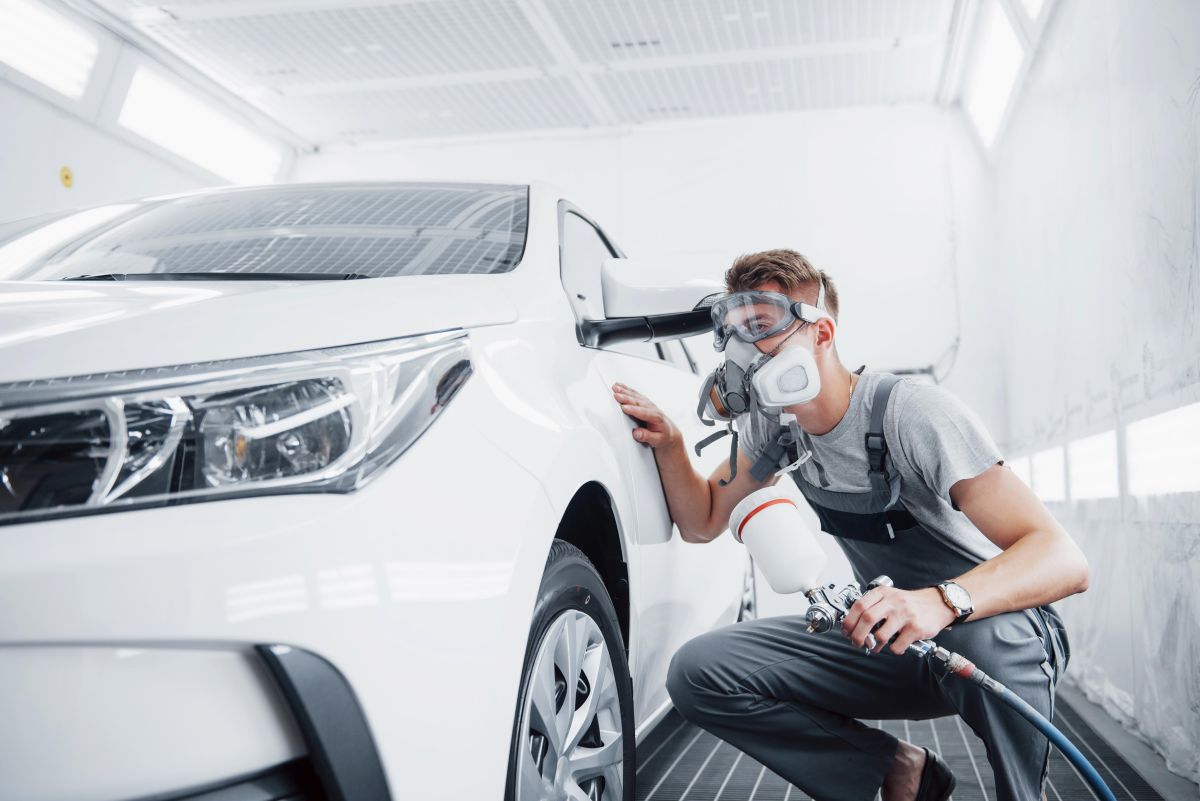Ryan Brown, Western technical manager with AkzoNobel, is a leader in helping body shops implement smarter, greener and more efficient sustainable practices through product innovation and hands-on support.
He joined The Collision Vision podcast, driven by Autobody News and hosted by Cole Strandberg, as it wrapped up its “Sustainability in Collision Repair” series to talk about why sustainability in business is an important initiative, along with how AkzoNobel is helping shops reduce their environmental impact and new product innovations that are pushing the industry forward.
Brown said he was once a collision repair customer of AkzoNobel’s. He later joined the company as an instructor, and then a consultant. Now he is the company’s technical manager for the western U.S. “I think that gives me a unique point of view on a lot of things that we do,” he said.
Sustainability is one of AkzoNobel’s core objectives. “We really want to be the most sustainable coatings company out there, and we've taken a lot of steps to become a leader in that space,” Brown said.
Since 2021, AkzoNobel has been working to reduce its carbon emissions by 50% by 2030, while producing products that are better for the environment and for the technicians working with them.
“It's something we're always striving towards,” Brown said, adding that AkzoNobel also works with its customers to help lower their carbon footprints as well.
Simply reducing waste is a big part of it, he said. ”How do we recycle more? How do we reuse more stuff? I have seen a culture shift within the company. It's always been a very strong part of how we operate. But you can even tell just little things, like if you go around some of our facilities, how do we reduce waste, how do we do things better than we did before? And I think that's an important thing to see.”
Brown said in general, European customers are more open to using a tool to calculate their CO2 emissions to customize their product mix than their U.S. counterparts.
“It goes down to a lot of different things,” he said. “Part of it is energy costs in some areas of the U.S. just aren't as much, so it really hasn't been as big of a deal. In Europe they felt a lot more of an energy crunch, and costs going up and shortages. So it's just more on the forefront and what they deal with in everyday life than what we maybe have to deal with in certain areas here.”
New Products Enhance Sustainability, Profitability
AkzoNobel recently launched Optima, a new waterborne basecoat, in the U.S. It has a lower VOC value than its previous waterborne product, while improving process time because less is needed to finish a job.
“We're trying to do it from a lot of different directions. We're looking for an efficiency standpoint, but also how do we cure it? How do we flash it off?” Brown said.
In the U.S. and Canada, VOC rules are more fragmented compared to Europe and other parts of the world, Brown explained. “What we mean by ‘exempt’ is that I can basically add as much of this in there as I want, and it doesn't count towards the total VOC,” he said.
In Southern California, the South Coast Air Quality Management District recently amended its rule that regulates VOC emissions from auto body coatings in an effort to reduce the amount of two previously exempted VOCs. Those solvents were exempted years ago because they didn’t contribute to ground level smog, but have since been confirmed as having toxic health concerns.
“For a lot of shops in that area, it will be a change in products, and they'll see another evolution of that in a couple of years when the limits change again,” Brown said.
The company’s newest products focus on performance while also helping customers lower their carbon footprint on their own, “without making it the focus of what we were doing,” Brown said.
“There really isn't a downside to it,” he said of a shop switching to newer products engineered to work better while being more “green.” “Anything you do that can improve curing speed or curing at a lower temperature is naturally going to improve your sustainability. So when it increases production at the shop level, that is always an added benefit.
“A lot of times [using a new product] is not necessarily an added cost. A lot of times it's cost savings,” Brown added.
Waterborne vs. Solventborne
Brown said he was an early adopter of waterborne products when he was a customer. “I've been spraying waterborne stuff since 2007, I believe it was, maybe 2008,” he said.
He said while a lot of AkzoNobel’s customers have since made the switch, it’s not right for every shop. Solventborne might be the best solution, based on throughput and equipment.
Some OEMs are going back to solvents in their manufacturing plants, Brown said, “mainly because it's sometimes more energy efficient for that place to cure solvent that way.”
“They're both really good technologies. They both have their place,” he added. “It is what fits that customer the best, and what's going to make them process cars the easiest.”
How to Get Started with Sustainability
“First off, don't be scared of it at all,” Brown said of implementing sustainable practices in a collision repair shop. “It's something to embrace and it can have a very positive impact on your business.”
Brown recommended starting with a shop’s paint vendor to help audit the paint operation and come up with a plan.
“It's not about ‘I've got to make this change today,’” he said. “It's a long-term vision that you have to adopt and figure out, ‘What do I want to be? What's my end goal and what steps do I need to start taking now?’”
Brown said some of the shops AkzoNobel has worked with have installed solar panels. Some generate enough energy to be self-sustaining. Others generate enough to sell the excess to their local power company. Some have even mounted them on parking lot coverings, which both generates energy and provides a covered outdoor working area.
Other shops have switched to AkzoNobel’s digital paint matching solution, which eliminates waste generated by printing color chips, while offering a much larger color library.
“We've seen an increase in their ability and their ease to match the color, but it's also, in the end, a more sustainable practice,” Brown said.
Shops can also look at their equipment, products and processes to reduce carbon emissions and energy consumption.
The next step is to get everyone in the shop on board with that plan. The biggest benefit, Brown said, is the shop culture change that can come about when everyone buys in.
“They have a distinct vision that they're after and you see a lot more unity within the shop, and it’s nice to see everyone moving towards a singular goal,” he said.
An improved shop culture also helps retain employees. “People are proud to work somewhere like this,” Brown said. “They tend to be a little bit cleaner in general. They're a little bit better organized. People don't want to leave. They like where they're at, they like the people they work with, and that makes a big deal.”
That improved morale also attracts new employees.
“It's not hard to spot when you walk in somewhere and everyone's happy to be there,” Brown said. “That's a place you want to be. we like going there as well.”
The Future of Sustainability in Collision Repair
AkzoNobel is always looking at new technology it can use in primers, sealers, basecoats and clearcoats, Brown said.
“We're constantly trying to push the envelope in that kind of stuff. And a lot of times when you push the envelope, you worry about adoption rate, because a lot of shops in general don't like change,” he said.
He said new clearcoats are being developed that work at lower baking temperatures. Those use less energy, but they are also important because electric and hybrid vehicles require lower temperatures to protect their battery packs.
Brown said he is encouraged by the number of shops he sees pulling OEM procedures for every repair as more vehicles come in with ADAS features and other advanced technology, which makes it easier to write an accurate repair plan.
“It seems very daunting at first, but as you get into it, it's not really that difficult,” he said.

















